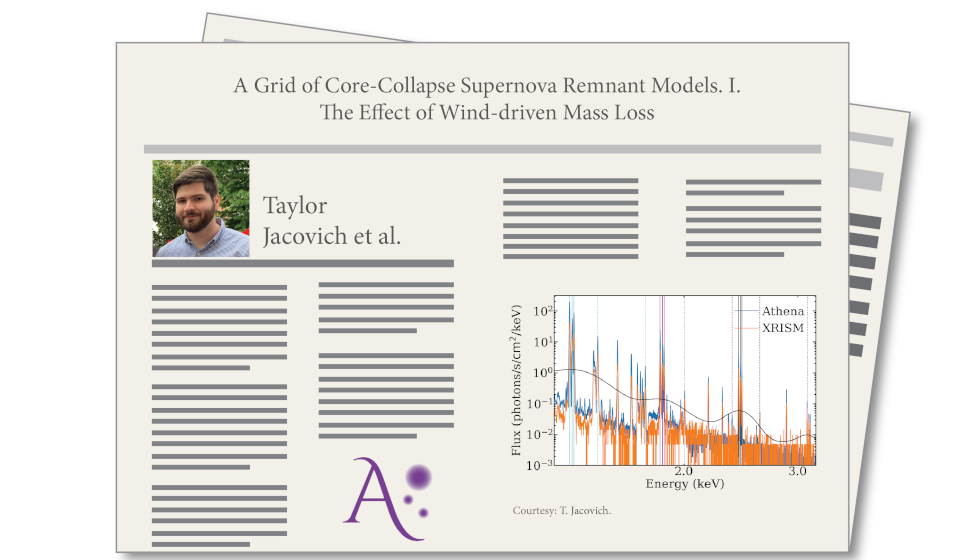
A Grid of Core-collapse Supernova Remnant Models

By Taylor Jacovich
Massive stars can shed material via steady, line-driven winds, eruptive outflows, or mass-transfer onto a binary companion. In the case of single stars, the mass is deposited by the stellar wind into the nearby environment. After the massive star explodes, the stellar ejecta interacts with this circumstellar material (CSM), often-times resulting in bright X-ray line emission from both the shock-heated CSM and ejecta. The amount of material lost by the progenitor, the mass of ejecta, and its energetics all impact the bulk spectral characteristics of this X-ray emission. Here we present a grid of core-collapse supernova remnant models derived from models for massive stars with zero-age main sequence masses of 10-30 solar masses evolved from the pre-main sequence stage with wind-driven mass-loss.
We discuss spectral features and analysis techniques that will be available with next-generation instruments such as the X-IFU onboard Athena. We examine the ability Athena will have to discriminate key emission lines and consider the detectability of modelled remnant spectral features such as Fe-K shell emission at Small Magellanic Cloud distances. We also discuss the use of He-like line ratios, as well as H-like to He-like line ratios for examining the plasma state of the remnant as a function of both, time post-CC and progenitor mass.

